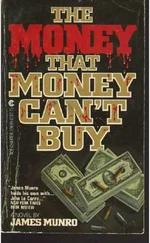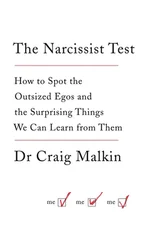The match took place on the raised platform at Vango, the fencing strip reserved for the final pairings. Long and narrow, the strip runs along a white wall that is painted with a large Canadian flag. Lesley and the woman she would challenge, Jennette Starks-Faulkner, were the highlight as they battled for overall gold in women’s foil. Chapman took no notice of the crowd. All her attention focused on her opponent. She was in a state of flow.
Cue Rocky III music. It was “Eye of the Tiger” time.
“She is built like a teenager,” she said of Starks-Faulkner, speaking respectfully of her opponent’s physical build and skill; Lesley was honored to have this chance to compete against the world champion. But there was also a desire to prove herself. Six months previous, the two paired off in Reno, Nevada, and Starks-Faulkner throttled Chapman 5–0 in under a minute. Such a crushing defeat can be hard for a warrior such as Lesley to swallow.
Chapman explained she would be happy just to get a couple of points on her opponent. But because Starks-Faulkner was so small and fast, Lesley would have to outthink her to stand any chance of not repeating their match the previous December.
“When she attacks, she’s like an arrow,” Lesley said of Jennette. “I knew when she came at me I had no choice but to get out the way.” Back and forth they danced across the raised strip, blades ablur in an ancient test of skill that used to be scored with blood rather than buzzer. Lesley’s mind raced on how to outwit her opponent’s superior speed. The tactics she devised used the advantage of her reach, following up a retreat from her opponent’s lunge with a counterattack using her longer arm.
Lesley watched Starks-Faulkner carefully, fencing defensively, waiting for her opponent to lunge. When the strike came, she beat a hasty retreat, just out of range of her opponent’s foil, then countered the smaller woman’s lunging blade and scored her first-ever point against the champion.
“‘Holy shit!’ I remember saying,” Lesley recalled. She knew she was still not at her opponent’s level but she wanted to give her a good fight.
In such a match, it is often said you don’t win silver but rather lose gold. After a long-fought battle, the final score was 10–6.
Lesley Chapman won silver.
Clicking into Place
The seed of Lesley’s silver-medal win was sown in 2004 in a single, life-defining moment.
“I had been sedentary my entire life,” Lesley said. “I was a good student and had it in my head that you were either a brain or a jock and ne’er the twain would meet.” This attitude had a negative effect on Lesley as she reached her third decade of life.
Lesley explained that she smoked and drank and would often eat an entire pizza for lunch by herself. Significantly overweight, she believed this was what life had in store. She’d become fatalistic.
Life sucked. She wasn’t happy but wasn’t seeking change, either. Life was a slow, downward spiral she felt powerless to prevent.
“When you’re drinking too much and smoking and eating crap all the time, it’s going to chip away at your happiness,” she said. She became depressed because she wasn’t doing anything with her life. Her routine was work, drink, smoke, watch movies, repeat.
But fencing changed all that. Quickly.
Lesley’s story is one of finding a passion for a specific sport that challenged not only her body but also her mind. She was living in Lexington, Kentucky, and an Olympic-fencing coach began offering classes at the local Y. Lesley heard an announcement about it at the university where she worked, and thought, Why not? Fencing was the one sport that held even a modicum of interest for the librarian, as it seemed sophisticated to her. “Grace Kelly fenced,” she said.
She found the sport intellectually engaging. “You’re concentrating so hard that you don’t realize you’re winded.” In addition to the Olympic-level coach and the mental stimulation, there was another instance, a seemingly minor event, Lesley remembers with clarity, that defined the next stage of her life.
Many embark on a path of lifestyle change and suffer through for a while, only to quit, but not Lesley. What made her experience different? Why was her journey of personal transformation successful when so many others fail?
The answer can be found in a single moment, when a new sense of purpose clicks into place.
Lesley had been fencing just a couple of months. The fencing area at the Kentucky YMCA is an intimate space atop three flights of stairs; climbing them was a workout all by itself. She’d be gasping and sweating by the time she reached the top, wondering, Why the hell am I here?
Her commitment to continue was tenuous. Then a switch flipped.
On that day, early in her fencing career, Lesley noticed a group of child fencers had stopped their practice to watch the adults engaging in partner drills. Knowing she was being observed by these impressionable youths, she doubled her efforts at parries and lunges, trying her best to make a good show. “Suddenly, I felt like I belonged there,” she said, “and that I wanted to get really good at this.” There was a powerful awakening in both heart and mind that this is what she was meant to do. “In that emotional moment, I knew I would keep coming back to learn everything I could.” It was an overwhelming sensation that made her feel as though she could weep with joy at what she had discovered: she would not quit . She would do whatever it took to become the best she could be. She would not quit.
Sacred excrement!
Suddenly and with surety of purpose, Lesley changed. It was not the step-by-step process like many behavior-change theories focus on. It was both instantaneous and total. A new part of her mind opened; a new Lesley was born, one that would never have to struggle to be motivated again.
She saw progress in her skill in increments, and it led to quitting cancer sticks so she didn’t cough up alveoli during matches, giving up booze so the hangover didn’t feel like she had a brain aneurysm during practice, and eating healthier to fuel performance and lose forty pounds so she could move faster and present a smaller target for her opponents.
“The changes are substantial,” said William Miller, an emeritus professor of psychology and psychiatry at the University of New Mexico and cocreator of the popular behavior-change technique called motivational interviewing. Miller is also the coauthor of Quantum Change: When Epiphanies and Sudden Insights Transform Ordinary Lives . He is a leader among the handful of researchers examining the topic of sudden and massive psychological change.
For the book, Professor Miller and his coauthor interviewed fifty-five people who had experienced life-changing epiphanies to create a structure around the phenomenon. He explained there can be focal changes, such as ceasing an addictive behavior, adopting a physical activity, or even a massive shift in mood, such as dramatic alleviation from depression. But such sudden change can also be broad-sweeping—a total shift in identity with far-reaching impact through a person’s life. What’s more, his coauthor did a ten-year follow-up and found something incredible: “No one had gone back to their state before the event happened. To the contrary, everyone spoke of moving ahead.”
Maintenance of the new behaviors, Miller explained, was high because it wasn’t a struggle to do so. “People didn’t talk about it using motivational language,” he said. They changed at a fundamental level. They became a new person for whom the new behaviors were the norm. It’s not a decision, it’s a sudden transformation.
Читать дальше












